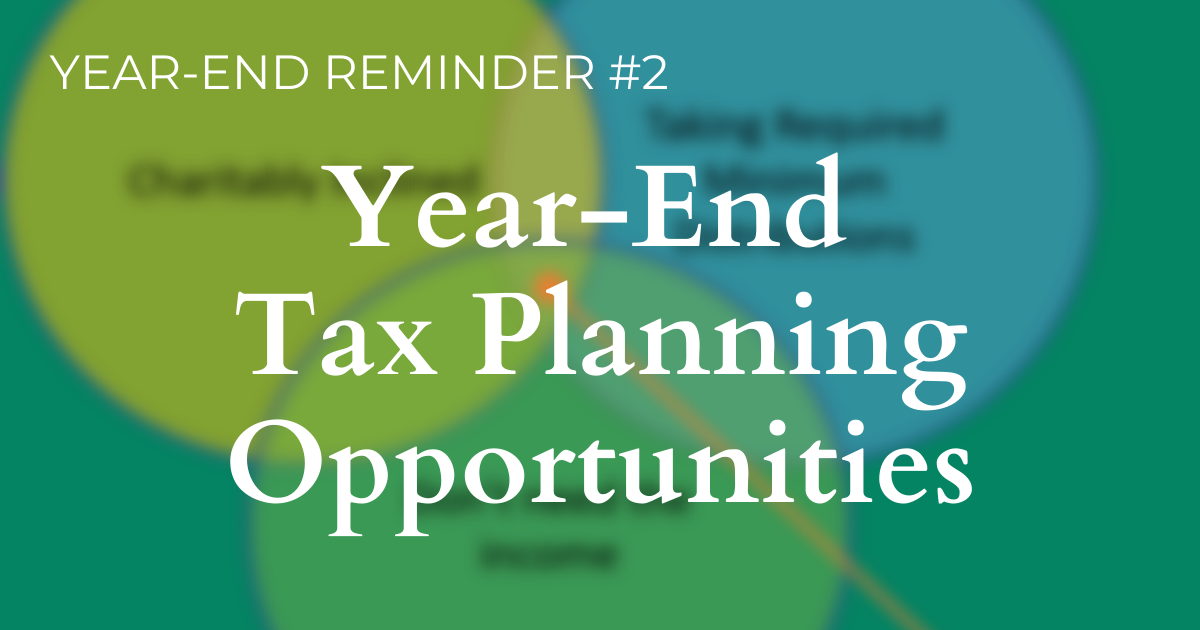Every year, U.S. taxpayers face a number of year-end deadlines which, if ignored, can be costly and even punitive. In the latter category, consider people who turned 70 1/2 before January 1, 2020 – or who turned 72 after that date – who forget to take the full required minimum distribution from their IRA or 401(k). If they get the calculation wrong, or forget the distribution altogether before December 31, they face a 50% penalty on the amount they should have taken.
Here, a best practice is to sit down weeks before the deadline and consider which parts of your portfolio you want to prune back, or what you would need to sell to rebalance your asset allocations back to their targeted percentages. If you don’t need some or all of the distribution (which is not uncommon), you don’t have to spend it; you can reinvest extra money in a taxable portfolio.
Naturally, the tax year also ends December 31, which means if you have losses in your portfolio–which may be unlikely this year considering strong performance by stocks–you have to realize them before the end of the year. A gain or loss is unrealized until the asset is sold or realized. You realize the losses and can use them to offset an equivalent amount of capital gains or up to $3,000 of ordinary income. This is known as tax loss harvesting.
If this is a low-income year, you might consider taking advantage of the 0% tax bracket for long-term capital gains (income below $40,400 for single taxpayers or $80,800 for joint filers) and harvest some gains from your portfolio. Keep in mine that many mutual funds will be distributing capital gains in December.
If you want to get a tax deduction for charitable contributions for 2021, then they need to be made before December 31. The challenge here is that the deduction is only available to people who itemize their deductions, and the relatively-high standard deduction means that many people won’t be itemizing. To get above the threshold, some people are bunching many years’ worth of charitable contributions into a single year by making a donation to a donor-advised fund. This raises their total contribution amount high enough so the donation becomes deductible again. This donation could be funded with cash–say you received a large bonus from your employer–or a highly-appreciated security or other asset.
Follow the link below for a year-end checklist graphic that may prompt some other thinking on your part. Don’t hesitate to contact us with your year-end planning questions. Also, we are happy to coordinate your year-end plans with your other professionals. Operators are standing by.
What Issues Should I Consider Before The End Of The Year 2021

